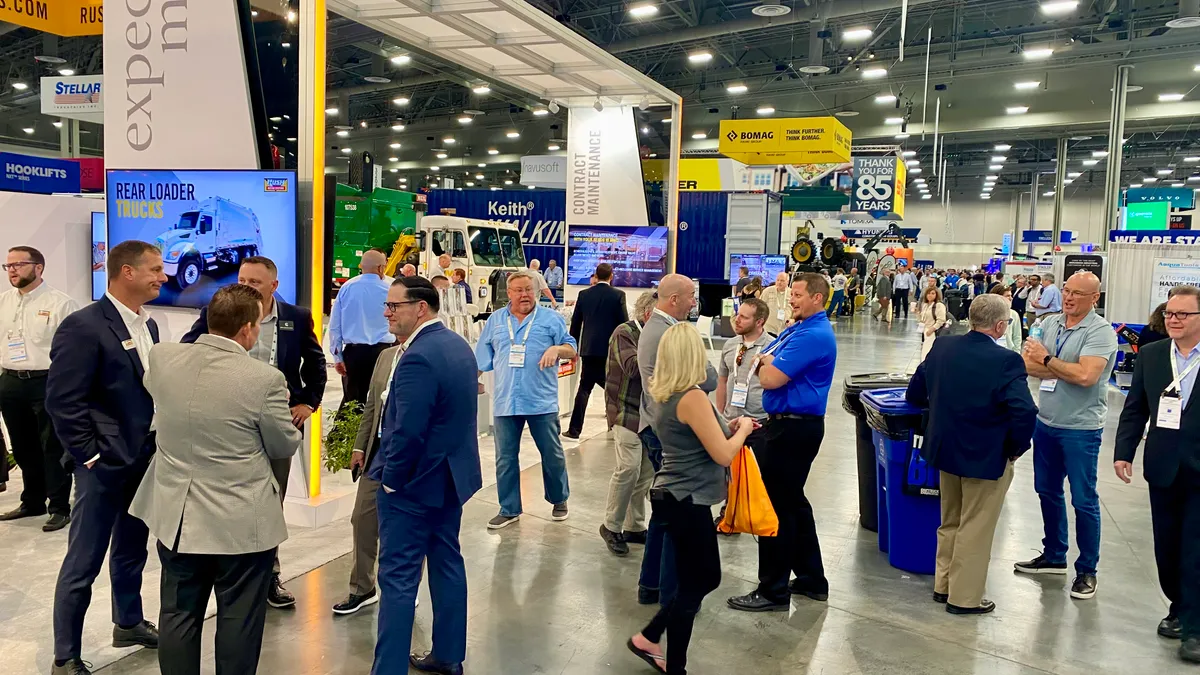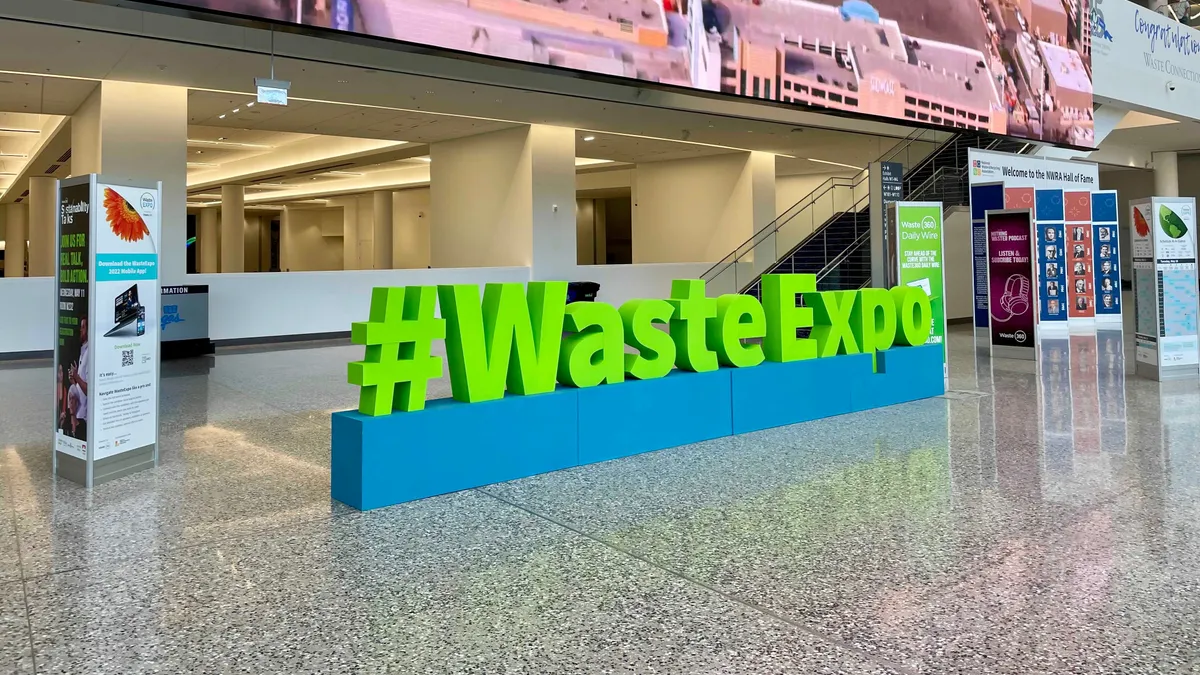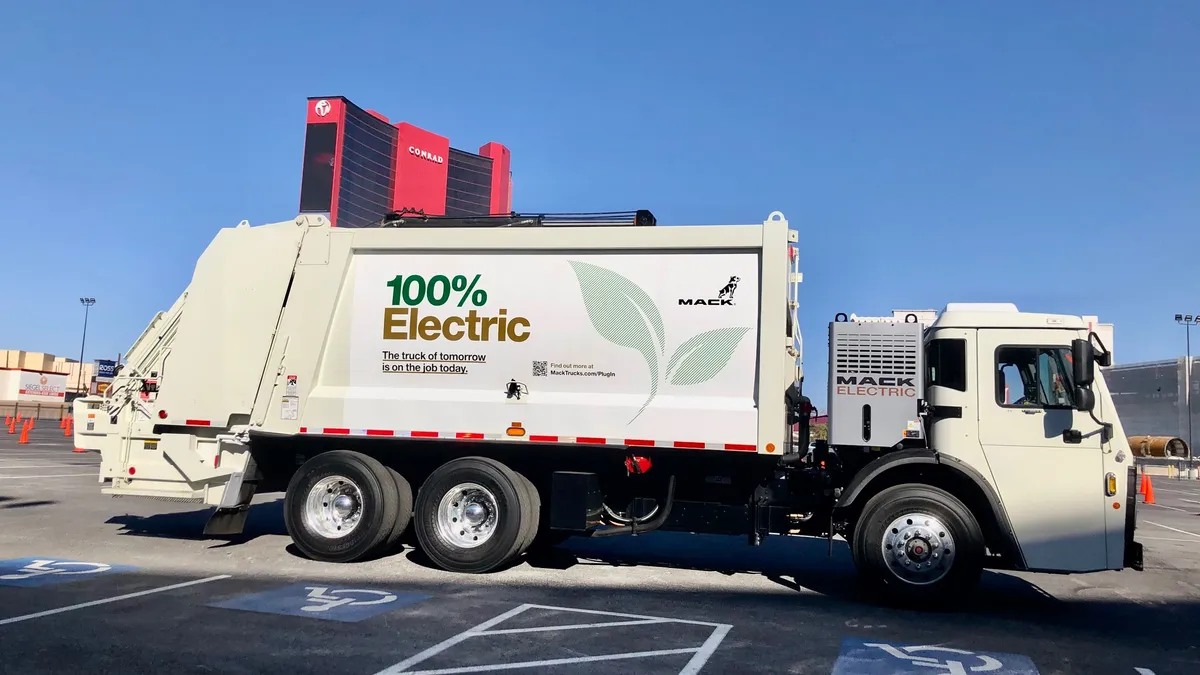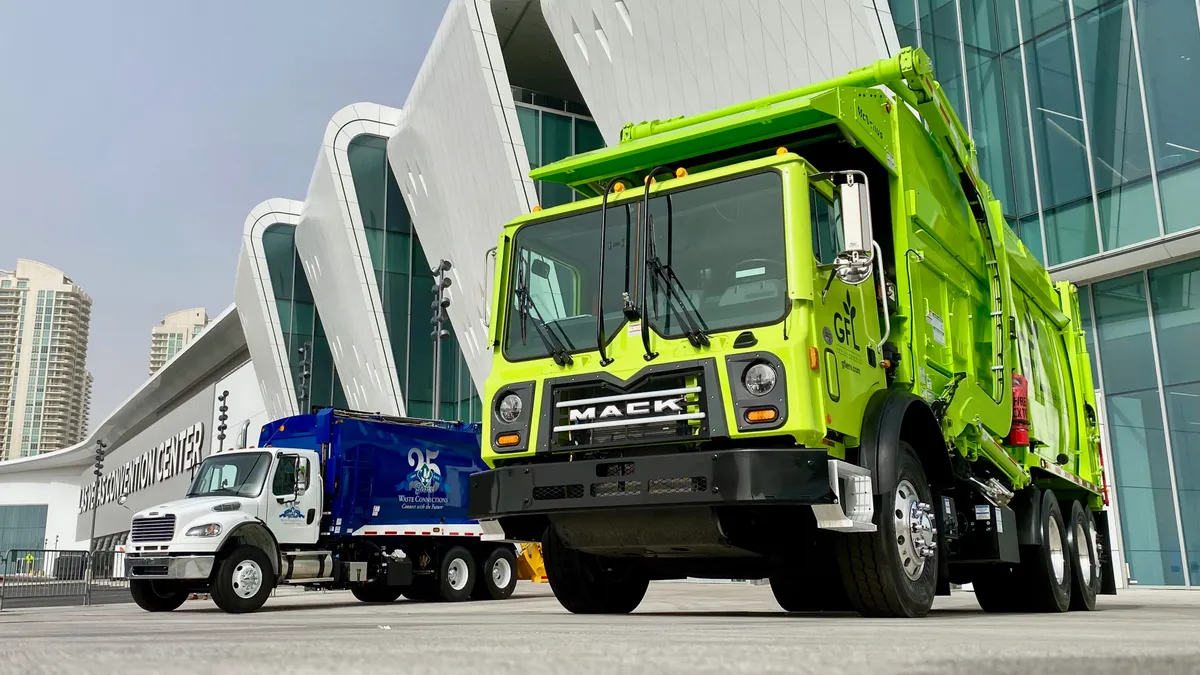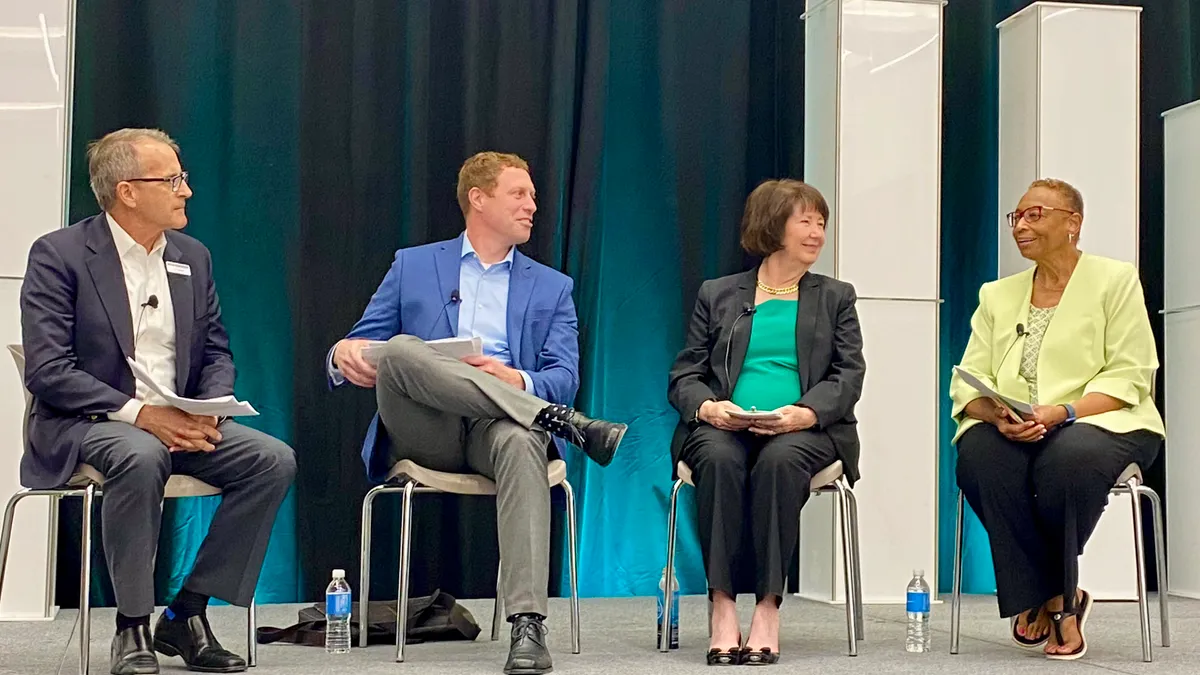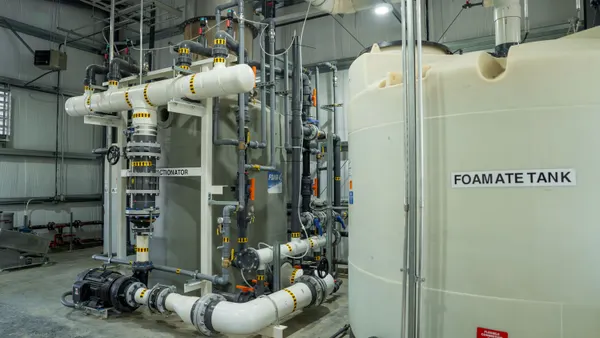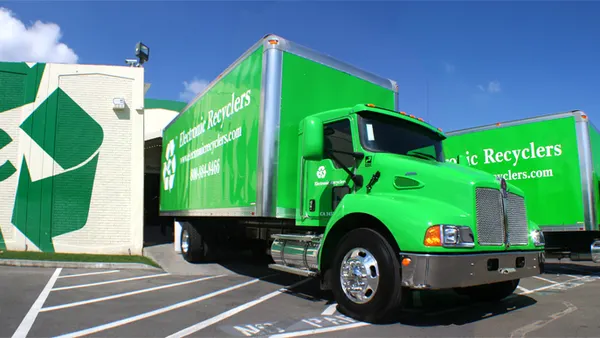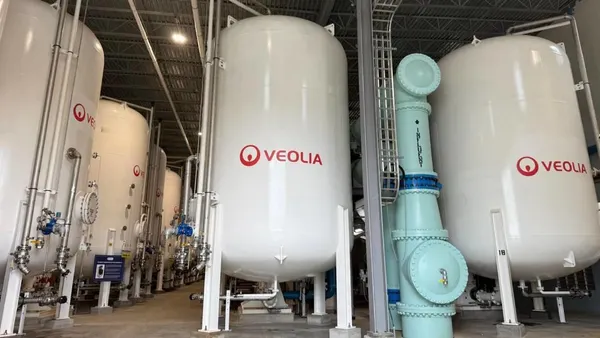WasteExpo, the waste industry's biggest conference, is always swirling with complex and evolving topics. To close out this year’s event, we’ve highlighted some of the notable discussions from throughout the four-day gathering in Las Vegas.
Better beverage container recycling could help match future demand for glass and aluminum
Processors looking for higher volumes of cleaner recycled aluminum and glass say current collection systems won’t meet future demand, but panelists at a commodities session offered suggestions for how U.S. programs and infrastructure could bridge the gap.
The U.S. will see an “increased appetite” for recycled aluminum in coming years, said Charles Johnson, president and CEO of the Aluminum Association. “We are investing big time across the industry,” he said, adding that while some primary aluminum smelters have shuttered, the industry in the last six months has announced about $1 billion in domestic aluminum rolling and recycling.
In 2021, the U.S. economy grew by 5.7%, and the U.S. aluminum industry grew by 7.7% in that same time, he said. The growth has been driven in part by a backlash against plastic, which has boosted the canned water and hard seltzer industry. Growth in the craft beer industry is also a factor.
Container deposit legislation is one way for the U.S. to feed such an appetite, Johnson said. The 10 states with bottle bills consume less than 20% of beverage containers, but provide almost half of the aluminum that is reclaimed from the consumer market.
“We know these policies work in addition to being high volume and bringing in clean aluminum,” he said.
Other aluminum producers and recyclers have also come out in support of bottle bills, but Johnson acknowledged such policies can be somewhat controversial and are hard to pass, with only Connecticut managing to update its bottle bill last year. Massachusetts and California are still considering bottle bill updates in their legislatures. A bill in Vermont died before the end of its legislative session, and major haulers such as Casella have opposed the bill.
Bottle bill states also play a major role in collecting glass, according to the Glass Packaging Institute, which wants to raise the national recycling rate for the material from about 30% to 50%. Scott DeFife, GPI’s president, said the states with a bottle bill routinely have above a 60% rate while bringing in more than half the usable cullet needed to go back into making containers. These states also source so much cullet because glass collected from the program tends to have less contamination, he said.
Though more bottle bill policies could help with the recycling rate, that’s not the only solution, DeFife said. Investments in MRF infrastructure can help boost recovery rates by getting glass out of the stream early, reducing contamination and reducing the risk of glass shards wearing down the equipment and contaminating other commodities streams later down the line, he said. And in places where MRFs aren’t contracted to take glass or see it as too expensive to handle, GPI hopes to work with municipalities to find other creative solutions to intercepting glass streams and connecting it with processors.
DeFife sees promise in building out more glass collection pilot programs that partner with bars and restaurants to separate their glass bottles into dedicated containers behind their businesses. Such programs already exist in some major cities, and he mentioned a pilot that had just started up again in Chicago, where “this material goes from the bar to glass processing and straight back into the supply chain,” he said. The advantage of programs like these, he said, is that they don’t rely on changes in consumer behavior or a reminder to return containers for a deposit.
Local leaders want firmer policies to progress on food waste
Local leaders in attendance sounded off on their food waste policy dreams during a panel discussion, which vary by city.
Brittany McPeak, sustainability project coordinator in Orlando, Florida, would like the city to have a self-imposed organics landfill ban. The hospitality industry is huge in Orlando, McPeak explained, and 40% of the city’s food waste comes from that sector. While commercial composting infrastructure is in place, it’s voluntary, so only a handful really participate: “We need policy,” McPeak said. The city is working toward incremental policies, such as pay-as-you-throw, to get there, she said.
For the District of Columbia’s Ida Arabshahi, a program analyst in the Department of Energy and Environment, the natural next step would be expanding the city’s farmers market food scrap dropoff sites to a curbside composting program. Funding for such a pilot program is included in the mayor’s proposed budget.
Holly Stirnkorb – who serves as senior solid waste planner at Metro, the regional government for Portland, Oregon – thinks impactful work still needs to happen at the producer level. For instance, consumers should be able to buy a half loaf of bread to cut back on portion-related waste, Stirnkorb said.
As for the role the private sector plays, Generate Upcycle President Bill Caesar said in his Sustainability Talks keynote that while businesses in the organics space have existed for a long time, their viability has transformed recently as market dynamics have changed. Communities and generators are more ready and willing to pay for diversion and technology, process and access to capital have improved. The adjustment in priorities and messaging is “happening in a way I would not have expected a few years ago,” Caesar said.
Data, cybersecurity concerns hard to ignore for waste and recycling operators
As technology becomes more integrated in waste and recycling operations, the questions of what data is valuable to businesses, who owns it, who wants to own it, and how it’s protected are common considerations today. Those ideas came up in a discussion of mobile apps that municipalities and companies have launched to engage with customers, answer questions about proper disposal, track missed pickups or issues, allow for payments, help waste generators visualize data and more.
As for where cybersecurity fits into the industry’s tech concerns today, leaders called out some basic, industry-agnostic issues as among the most pressing cyber threats to waste and recycling businesses. Since the pandemic, the biggest challenge has been securing remote employees, said Casella Waste Systems Chief Information Officer Frank Wilk during a panel. Phishing is an ongoing concern. Part of the issue is speaking openly within organizations about cybersecurity, said WM Senior Director of Cybersecurity Mike Coogan.
“I think we don't share enough. We just don't. Part of it is there's a generalized perception [that] it's super secret stuff, right? If I told you that I work for a $50 billion company and occasionally hackers try to get our money, that shouldn't shock anybody,” Coogan said. “Everyone in this industry has money, and people are going after them using phishing, using smishing, using all those things, trying to get that money. And so we impose these artificial barriers to openly talking about what's going on in the universe.”
Hardware is an important piece of the conversation too. "Out of 10 new clients, seven are coming to us first on data issues and cybersecurity issues," said John Shegerian, CEO of electronic recycling and IT asset disposition services firm ERI. While e-waste in an environmental issue, "the liability that runs with a data breach is much higher than the liability that comes with an environmental issue a lot of times," he said during a panel on sustainability trends.
State funding can support waste diversion goals
Opening, retrofitting or operating a recycling or organics facility can be expensive. During a session on California’s grant, loan and tax deferral programs, panelists highlighted ways operators in the state were able to grow their businesses using such programs, while offering advice for how facilities outside the state can connect to similar programs that may be available in their area.
California’s organics recycling policies dictating waste diversion and increased recycling rates are driving waste business in the state, and California has an incentive to offer financial help to beef up necessary infrastructure for the state to meet its recycling goals, said Rachel Oster, principal at Diversion Strategies.
Last year, California allocated $270 million in its state budget over two years to support circular economy projects, with $195 million of that going to organic waste recycling projects meant to comply with SB 1383, according to Laura Ferrante, a government affairs advocate for the Resource Recovery Coalition and a commissioner on the Statewide Commission on Recycling Markets and Curbside Recycling. The policy requires California to reduce disposal of organic waste by 75% of its 2014 level by 2025.
Recology is among the companies that used a CalRecycle organics grant to offset expenses in building the first phase of its Wheatland composting facility, designed to handle 250 tons per day. The grant is among CalRecycle's Greenhouse Gas Reduction Fund grants, which use proceeds from the state’s cap-and-trade auction to encourage projects that divert waste from landfills and reduce emissions.
CalRecycle estimates the state will need over 160 new and expanded organic waste processing facilities to meet the goal, which could cost up to $10 billion by 2030, Ferrante said. Without grants, that expense goes to ratepayers, she said.
Fiona Ma, California's treasurer, said the state’s separate sales tax exemption program is another way to attract “clean and green” businesses to the state and help them waive sales tax on certain equipment. There's also the CalCompetes program, which allows companies to apply for an income tax deferral of between three and five years. Both programs are competitive and have been popular. “This is really to incentivize folks to hire people, save some of their tax revenues and then hopefully when they are up and running, they'll be paying their taxes later down the road.”
Recology also used the tax exemption program to renovate an aging Sonoma County MRF that collected about 300 tons a day but was only able to process about 90 tons a day. Through the sales tax exemption program, Recology got a $1.5 million sales tax deferral in order to upgrade the facility for better efficiency, said Sal Coniglio, the company’s CEO.
“We continue to look for those opportunities as we grow to retrofit and modernize the company and our facilities,” Coniglio said.
For those operating outside of California, Ma recommends researching whether similar local grants are available, and to get involved with local government agencies to voice support for future grants if none are currently available. “Lobby your state and tell them what kind of infrastructure you want,” she said. Federal recycling infrastructure funding through the Infrastructure Investment and Jobs Act will also soon become available, she said.
WasteExpo tries to walk the talk on sustainable industry conferences
In the lobby of the convention center, attendees were greeted by a three-bin system for separating trash, recycling and organics. Dining service provided inside the one-day Sustainability Talks event featured washable rather than disposable dishware. According to signage at the event, other waste-related initiatives in place this year included repurposing food waste for the lunch provided during the conference’s Food Recovery Forum and reducing paper consumption by having a mobile app rather than hard-copy conference programs.
At the same time, session rooms were still outfitted with single-use plastic water bottles for speakers. The popular food court produced plenty of packaging waste. The exhibit hall still abounded with freebies.
Given the closed and controlled nature of large events, like sports matches or concerts, some cities and other stakeholders see them as a more approachable starting point and testing ground for reusable container systems and related initiatives. Seattle’s hockey and basketball arena, for instance, says it will eliminate single-use plastics by 2024 and is aiming to divert more than 97% of its waste. Allegiant Stadium in Las Vegas, where WasteExpo hosted its first-night reception, says it diverts food waste to become livestock feed for a local farm.
Correction: This story has been updated with a more recent estimated recycling rate for glass containers and to differentiate between two tax-related programs in California.




